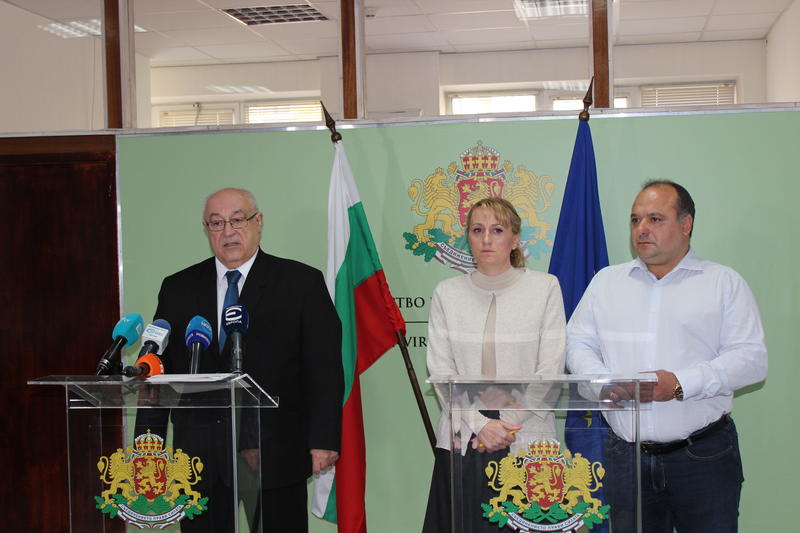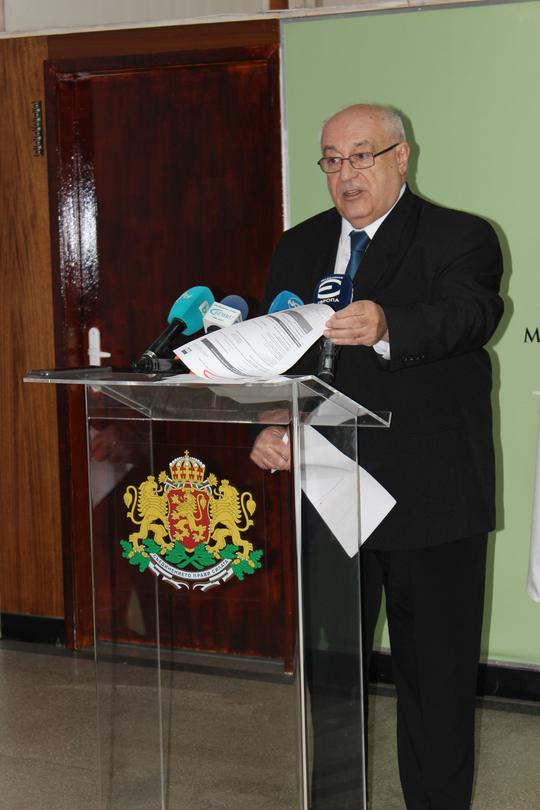The main environmental risk in the Kamen Bryag area has been overcome
30 Sep, 2021 | 16:05At a briefing for journalists, the Minister of Environment and Water Asen Lichev confirmed that by draining the fuel from the lower tanks of the run-aground ship the main risk to the environment in the area of Kamen Bryag has been overcome. Practically, this means that there is no possibility for the tank to get punctured and for dangerous fuel (light diesel) to leak. He clarified that according to Commission Regulation (EU) 2015/830, light diesel, which has already been removed from the ship, is classified as highly toxic to aquatic organisms, with a long-lasting effect on the surrounding rocks and part of the coast.
According to this mandatory for Bulgaria Regulation, urea is not allowed to be transported in bulk. “It is unacceptable for a Member State to allow a ship that is clearly moving ashore, clearly loaded with loose urea, to collide with our coast, to endanger the aquatic ecosystem and to endanger the “Yaylata” Protected Area. For me, this is a motive to refer the case to the Prosecutor’s Office to conduct an investigation against the Maritime Administration under the Penal Code section for crime against the environment”, said Minister Asen Lichev. In this regard, he shared: “In fact, we found only two good things from the last regular government - the SUV, driven by the Prime Minister with state funds, and his personal media ‘Sevda TV’. The administration, which we found in inheritance, especially in the Maritime Administration and in particular in the Ministry of Environment and Water, has shown that it has professional, ethical, and moral deficits,” said the Minister and continued: “In fact, we were facing two crises. One is administrative, severe, the other is an environmental crisis. For me, the turning points were two. One on September 26th, when I wrote a position paper initiating action by the Maritime Administration. The second was on the night of September 27th, when I saw how the actions of the Maritime Administration to transfer the urea were more detrimental than useful in protecting the marine environment. As a result, as you know, I also imposed a coercive administrative measure, which further prohibited this operation. On the 25th, before the operation, our authorities took samples from the water around the run-aground ship, and after seeing how the operation went, I ordered them to take water samples from the same area again. The results from yesterday, which leaked online, were incorrectly commented. What did those actually show? The data before the operation we consider to be the normal content of nitrates in this area. Compared to this normal content, the samples after the operation show 1.6 times higher concentration of ammonium nitrate”, clarified Minister Lichev.
Rositsa Karamfilova, Executive Director of the Executive Environment Agency, further explained that the results of the samples taken on-site establishing indicators, such as PH active reaction, temperature, dissolved oxygen, and oxygen saturation show that there is an absolutely stable trend. As it was on September 25th, so it is observed to this day, and the results are comparable to the standard and regular monitoring carried out by the Institute of Oceanology. As for the values for ammonium nitrogen, after the detected spillage of urea during its improper removal from the ship, an excess was found in the morning, just after the evening spillage - this was obvious to everyone and the results confirmed it. The Executive Director of the EEA stressed that as an indication of whether there is a danger of flowering and depletion of oxygen in the water, the sample for dissolved oxygen and oxygen saturation in the marine environment is extremely important, which currently shows absolute stability in the trend.
Minister Asen Lichev informed that he has instructed the Executive Environment Agency to conduct a surface monitoring of sea waters within a radius of one kilometer around the ship, which will serve as a basis for comparison of environmental impact in each subsequent operation, which will be conducted on the rescue of the run-aground ship.
He stressed that the MOEW authorities have taken on their role from the first moment, continue to monitor the state of the Black Sea waters in the area of the ship on a daily basis and are ready to provide any assistance to any rescue operation proposed by their colleagues from the Ministry of transport. “From now on, our common priority will be to prevent any damage to the environment, human health, and the protected area,” concluded Minister Asen Lichev.

